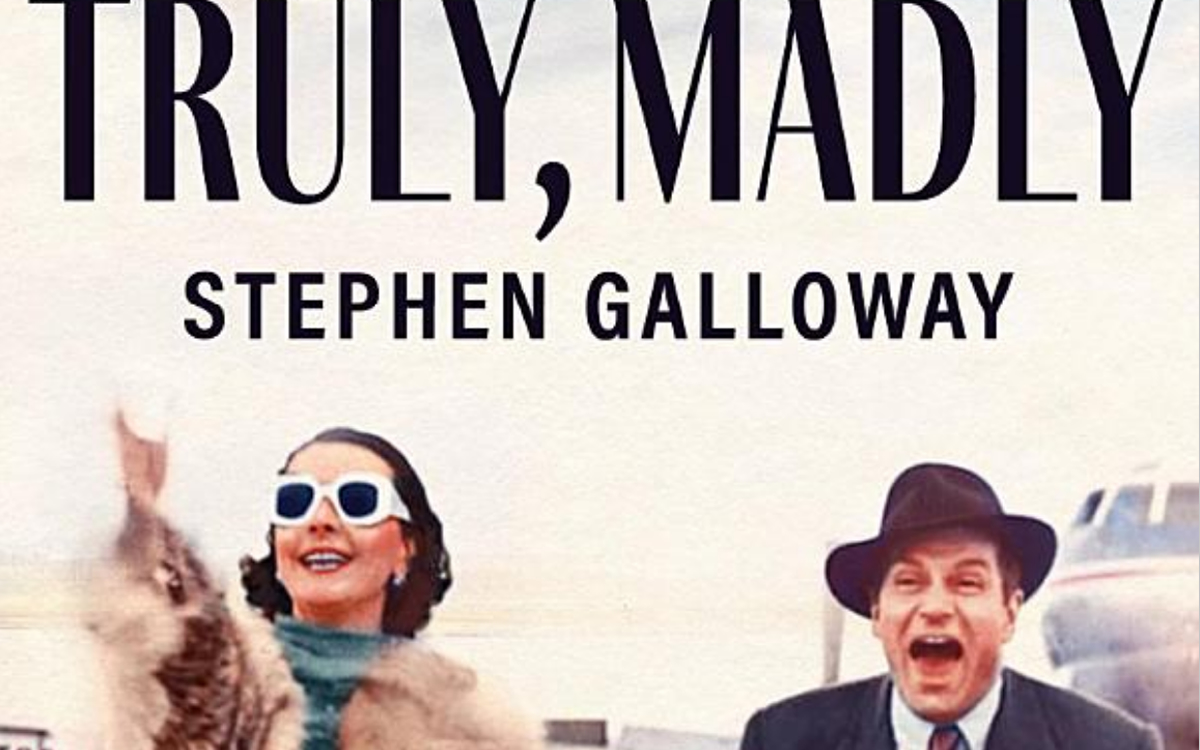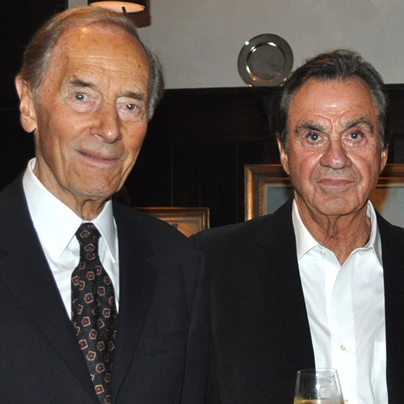Books
‘Truly, Madly’ full of dish, glam, and eccentricities
Exploring the fiery romance of Olivier and Vivien Leigh

‘Truly, Madly’
By Stephen Galloway
c.2022, Grand Central Publishing
$30/406 pages
“Real passion — I’ve only seen it that once,” actress Jill Esmond told her son Tarquin. “If you are ever hit by it, God help you.”
Esmond, the first wife of actor Laurence Olivier, was speaking of the fiery romance of Olivier and the actress Vivien Leigh.
Decades before paparazzi trailed the tempestuous trysts of Elizabeth Taylor and Richard Burton, there was the love-struck coupling of Hollywood royalty Olivier and Leigh.
You might think love and passion are only dramatic in Shakespeare or movies from Hollywood’s Golden Age. But “Truly, Madly: Vivien Leigh, Laurence Olivier, and the Romance of the Century” by Stephen Galloway, former executive editor of The Hollywood Reporter, tells a story as steamy and spellbinding as any of Will’s tales or Tinseltown’s plots.
Much has been written about Olivier, who lived from 1907 to 1989, and Leigh, who died in 1967 at age 53, – from Donald Spoto’s superb 1992 biography of Olivier to Alan Strachan’s engaging Leigh bio “Dark Star.” Olivier wrote two memoirs “Confessions of an Actor” and “On Acting.”
Yet Galloway, now dean of Chapman University’s Dodge College of Film and Media Arts, provides a fresh take on this well-trod ground.
It’s tempting to view Olivier and Leigh as Tinseltown mavens who had it all. But Galloway makes it clear that there was much pain in the midst of the glittering surface of their relationship.
Olivier, born in Dorking, Surrey, England, was renowned for his work on stage and screen. “Romeo and Juliet” and “The Entertainer” were among his many acclaimed productions in the theater. He received numerous honors, including a Best Actor Oscar for his role in “Hamlet.” In 1947, he was knighted.
Leigh was born in India. After studying at the Royal Academy of Dramatic Art, she married Leigh Holman. She took her stage name “Leigh” from him. Leigh and Holman had a daughter named Suzanne.
Leigh is remembered most for her portrayal of Scarlett O’Hara in “Gone with the Wind” and her performance as Blanche DuBois in “A Streetcar Named Desire.” She won the best actress Oscar for both movies.
Olivier became transfixed by Leigh when he saw her perform on stage in 1935. For two years, “Day in and day out, they would sneak off the set of their new movie,” Galloway writes, “or sit lost amid a swirl of dreams, real-life versions of the lovers they would later play, Romeo and Juliet.”
In 1937, Olivier and Leigh ran away together, though they were both married to other people. The couple carried out their affair at a time when divorce wasn’t common. Then, Hollywood wanted its stars’ extra-marital liaisons to be kept secret.
After Esmond and Holman divorced them, Olivier and Leigh got married in 1940.
Katharine Hepburn was the maid of honor and writer Garson Kanin was the best man at their wedding. Kanin’s account of the nuptials (Hepburn says she’s a “prude” – the newlyweds talk is too “racy” for her) is laugh-out-loud funny.
“Truly, Madly” is full of dish, glam and eccentricities. Celebs from Noel Coward to Marilyn Monroe appear. Along with a lemur named Tony. Olivier gives Tony to Esmond to cheer her up when their marriage is on the rocks.
Galloway doesn’t shy from or overly emphasize speculations about sexuality. Friends talk of Esmond having “liaisons” with women. Despite Olivier’s denials, Spoto and others claim that Olivier had affairs with Danny Kaye and Noel Coward.
Though they adored each other, Olivier and Leigh’s marriage wasn’t a Coward cocktail party.
Leigh had bipolar disorder. At that time, there wasn’t the treatment for this condition that there is today, and there was much stigma around mental illness. It’s easy to romanticize or sensationalize mental illness. By talking with Kay Redford Jamison and other mental health experts, Galloway avoids these pitfalls.
A friend visited Olivier shortly before he died, Galloway reports. Olivier was watching Leigh in one of her movies. “This, this was love,” Olivier told his friend.
“Truly, Madly” is a fab read. Warning: have a handkerchief in hand.
Books
New book offers observations on race, beauty, love
‘How to Live Free in a Dangerous World’ is a journey of discovery

‘How to Live Free in a Dangerous World: A Decolonial Memoir’
By Shayla Lawson
c.2024, Tiny Reparations Books
$29/320 pages
Do you really need three pairs of shoes?
The answer is probably yes: you can’t dance in hikers, you can’t shop in stilettos, you can’t hike in clogs. So what else do you overpack on this long-awaited trip? Extra shorts, extra tees, you can’t have enough things to wear. And in the new book “How to Live Free in a Dangerous World” by Shayla Lawson, you’ll need to bring your curiosity.

Minneapolis has always been one of their favorite cities, perhaps because Shayla Lawson was at one of Prince’s first concerts. They weren’t born yet; they were there in their mother’s womb and it was the first of many concerts.
In all their travels, Lawson has noticed that “being a Black American” has its benefits. People in other countries seem to hold Black Americans in higher esteem than do people in America. Still, there’s racism – for instance, their husband’s family celebrates Christmas in blackface.
Yes, Lawson was married to a Dutch man they met in Harlem. “Not Haarlem,” Lawson is quick to point out, and after the wedding, they became a housewife, learned the language of their husband, and fell in love with his grandmother. Alas, he cheated on them and the marriage didn’t last. He gave them a dog, which loved them more than the man ever did.
They’ve been to Spain, and saw a tagline in which a dark-skinned Earth Mother was created. Said Lawson, “I find it ironic, to be ordained a deity when it’s been a … journey to be treated like a person.”
They’ve fallen in love with “middle-American drag: it’s the glitteriest because our mothers are the prettiest.” They changed their pronouns after a struggle “to define my identity,” pointing out that in many languages, pronouns are “genderless.” They looked upon Frida Kahlo in Mexico, and thought about their own disability. And they wish you a good trip, wherever you’re going.
“No matter where you are,” says Lawson, “may you always be certain who you are. And when you are, get everything you deserve.”
Crack open the front cover of “How to Live Free in a Dangerous World” and you might wonder what the heck you just got yourself into. The first chapter is artsy, painted with watercolors, and difficult to peg. Stick around, though. It gets better.
Past that opening, author Shayna Lawson takes readers on a not-so-little trip, both world-wide and with observant eyes – although it seems, at times, that the former is secondary to that which Lawson sees. Readers won’t mind that so much; the observations on race, beauty, love, the attitudes of others toward America, and finding one’s best life are really what takes the wheel in this memoir anyhow. Reading this book, therefore, is not so much a vacation as it is a journey of discovery and joy.
Just be willing to keep reading, that’s all you need to know to get the most out of this book. Stick around and “How to Live Free in a Dangerous World” is what to pack.
The Blade may receive commissions from qualifying purchases made via this post.
Books
Story of paralysis and survival features queer characters
‘Unswerving: A Novel’ opens your eyes and makes you think

‘Unswerving: A Novel’
By Barbara Ridley
c.2024, University of Wisconsin Press
$19.95 / 227 pages
It happened in a heartbeat.
A split-second, a half a breath, that’s all it took. It was so quick, so sharp-edged that you can almost draw a line between before and after, between then and now. Will anything ever be the same again? Perhaps, but maybe not. As in the new book “Unswerving” by Barbara Ridley, things change, and so might you.

She could remember lines, hypnotizing yellow ones spaced on a road, and her partner, Les, asleep in the seat beside her. It was all so hazy. Everything Tave Greenwich could recall before she woke up in a hospital bed felt like a dream.
It was as though she’d lost a month of her life.
“Life,” if you even wanted to call it that, which she didn’t. Tave’s hands resembled claws bent at the wrist. Before the accident, she was a talented softball catcher but now she could barely get her arms to raise above her shoulders. She could hear her stomach gurgle, but she couldn’t feel it. Paralyzed from the chest down, Tave had to have help with even the most basic care.
She was told that she could learn some skills again, if she worked hard. She was told that she’d leave rehab some day soon. What nobody told her was how Les, Leslie, her partner, girlfriend, love, was doing after the accident.
Physical therapist Beth Farringdon was reminded time and again not to get over-involved with her patients, but she saw something in Tave that she couldn’t ignore. Beth was on the board of directors of a group that sponsored sporting events for disabled athletes; she knew people who could serve as role models for Tave, and she knew that all this could ease Tave’s adjustment into her new life. It was probably not entirely in her job description, but Beth couldn’t stop thinking of ways to help Tave who, at 23, was practically a baby.
She could, for instance, take Tave on outings or help find Les – even though it made Beth’s own girlfriend, Katy, jealous.
So, here’s a little something to know before you start reading “Unswerving”: author Barbara Ridley is a former nurse-practitioner who used to care for patients with spinal cord injuries. That should give readers a comfortable sense of satisfaction, knowing that her experiences give this novel an authenticity that feels right and rings true, no faking.
But that’s not the only appeal of this book: while there are a few minor things that might have readers shaking their heads (HIPAA, anyone?), Ridley’s characters are mostly lifelike and mostly likable. Even the nasties are well done and the mysterious character that’s there-not-there boosts the appeal. Put everyone together, twist a little bit to the left, give them some plotlines that can’t ruined by early guessing, and you’ve got a quick-read novel that you can enjoy and feel good about sharing.
And share you will because this is a book that may also open a few eyes and make readers think. Start “Unswerving” and you’ll (heart) it.
The Blade may receive commissions from qualifying purchases made via this post.
Books
Examining importance of queer places in history of arts and culture
‘Nothing Ever Just Disappears’ shines with grace and lyrical prose

‘Nothing Ever Just Disappears: Seven Hidden Queer Histories’
By Diarmuid Hester
c.2024, Pegasus Books
$29.95/358 pages
Go to your spot.
Where that is comes to mind immediately: a palatial home with soaring windows, or a humble cabin in a glen, a ramshackle treehouse, a window seat, a coffeehouse table, or just a bed with a special blanket. It’s the place where your mind unspools and creativity surges, where you relax, process, and think. It’s the spot where, as in the new book “Nothing Ever Just Disappears” by Diarmuid Hester, you belong.

Clinging “to a spit of land on the south-east coast of England” is Prospect Cottage, where artist and filmmaker Derek Jarman lived until he died of AIDS in 1994. It’s a simple four-room place, but it was important to him. Not long ago, Hester visited Prospect Cottage to “examine the importance of queer places in the history of arts and culture.”
So many “queer spaces” are disappearing. Still, we can talk about those that aren’t.
In his classic book, “Maurice,” writer E.M. Forster imagined the lives of two men who loved one another but could never be together, and their romantic meeting near a second-floor window. The novel, when finished, “proved too radical even for Forster himself.” He didn’t “allow” its publication until after he was dead.
“Patriarchal power,” says Hester, largely controlled who was able to occupy certain spots in London at the turn of the last century. Still, “queer suffragettes” there managed to leave their mark: women like Vera Holme, chauffeur to suffragette leader Emmeline Pankhurst; writer Virginia Woolf; newspaperwoman Edith Craig, and others who “made enormous contributions to the cause.”
Josephine Baker grew up in poverty, learning to dance to keep warm, but she had Paris, the city that “made her into a star.” Artist and “transgender icon” Claude Cahun loved Jersey, the place where she worked to “show just how much gender is masquerade.” Writer James Baldwin felt most at home in a small town in France. B-filmmaker Jack Smith embraced New York – and vice versa. And on a personal journey, Hester mourns his friend, artist Kevin Killian, who lived and died in his beloved San Francisco.
Juxtaposing place and person, “Nothing Ever Just Disappears” features an interesting way of presenting the idea that both are intertwined deeper than it may seem at first glance. The point is made with grace and lyrical prose, in a storyteller’s manner that offers back story and history as author Diarmuid Hester bemoans the loss of “queer spaces.” This is really a lovely, meaningful book – though readers may argue the points made as they pass through the places included here. Landscapes change with history all the time; don’t modern “queer spaces” count?
That’s a fair question to ask, one that could bring these “hidden” histories full-circle: We often preserve important monuments from history. In memorializing the actions of the queer artists who’ve worked for the future, the places that inspired them are worth enshrining, too.
Reading this book may be the most relaxing, soothing thing you’ll do this month. Try “Nothing Ever Just Disappears” because it really hits the spot.
The Blade may receive commissions from qualifying purchases made via this post.


















